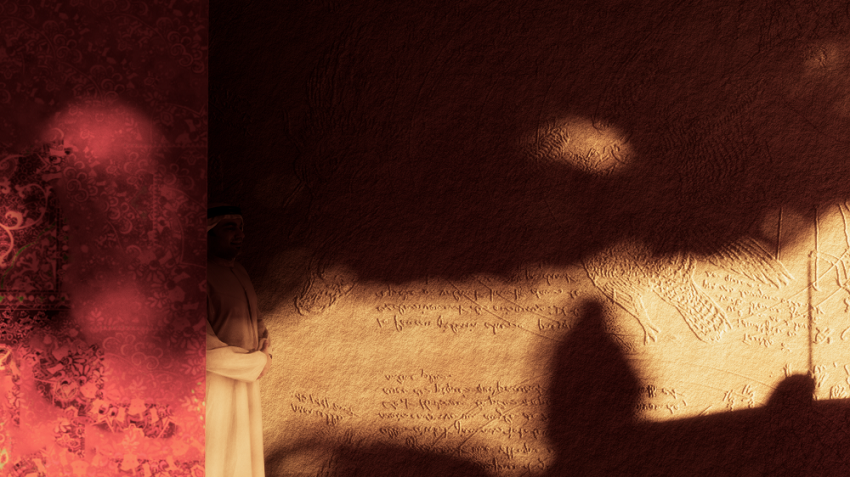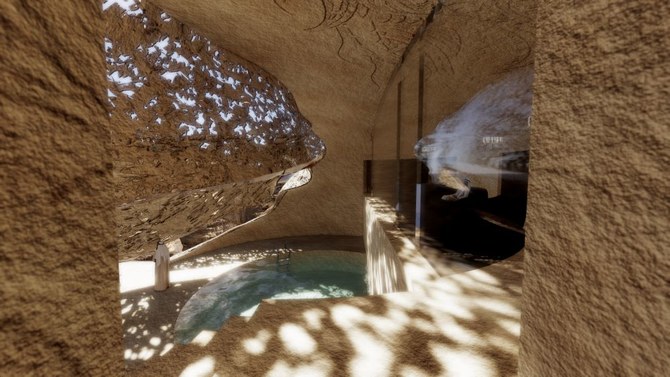ALULA, Saudi Arabia: New concept designs for the Sharaan by Jean Nouvel resort revealed today offer a deeper understanding of the architect’s daring vision for AlUla, the cultural oasis in north-west Arabia.
Located deep within the Sharaan Nature Reserve, the designs draw on the nearby Nabataean wonders of Hegra, Saudi Arabia’s first UNESCO World Heritage Site. In a world-first, this 2,000-year-old architectural legacy is being revived by Jean Nouvel for potentially the first time since the Nabataeans carved into the region’s millions-of-years-old sandstone rock.
As the concepts were unveiled, architect Jean Nouvel described AlUla as “The coming together of a landscape and history; The history of past civilizations in an extraordinary landscape – the only place to create such a masterpiece.
Nouvel emphasized the importance of preserving such a unique landscape: “AlUla is a museum. Every wadi and escarpment, every stretch of sand and rocky outline, every geological and archeological site deserves the greatest consideration. It’s vital we keep all its distinctiveness and conserve its attractiveness, which largely rests on its remote and occasionally archaic character. We have to safeguard a little mystery as well as the promise of discoveries to come.
Nouvel’s commitment to respecting AlUla’s landscape and ancient heritage has not meant shying away from modern architectural ideas. “AlUla deserves to acquire a degree of modernity,” he suggests. “Envisioning the future is a never-ending obligation that requires us to be fully alive to places in the present as well as conjuring up the past.
Jean Nouvel explains how he’s adapting old ways of life to our modern world, minimizing the impacts on natural and urban landscapes. To do this Nouvel has introduced a new typology of architecture never seen before, using abstraction, sculpting within the landscape itself rather than competing with it. Inspired by the Nabateans, it plays on the old ways of living to build on the present and meet the challenges of the future. Jean Nouvel integrates the way Nabateans interacted with their environment, both verticality and horizontality, to reconnect to the earth and build sustainable habitats, away from the heat of the summer and the cold of the winter.

Above, the new concept designs for the Sharaan by Jean Nouvel. (The Royal Commission for AlUla)
Nouvel views this resort as an opportunity to bring to life a strong spatial, sensorial and emotional experience on the borders of nature, architecture and art – where the sound, musicality, harshness, tactility, power and complexity of nature are everywhere, from finely chopped stones on balconies to the singular granularity of each rock wall, all becomes an artwork in itself.
“Our project should not jeopardize what humanity and time have consecrated,” emphasizes Nouvel, “Our project is celebrating the Nabateans spirit without caricaturing it. This creation genuinely becomes a cultural act.
Taking on a curatorial approach in the museographical sense, Jean Nouvel has created public spaces geared towards the joy of living there, by day, by night, with all the various colors, light, shadow, wind, torrential rain, and the passage of time. He invites travellers to embark on a journey through thousands of years of civilizations and geographical strata within every detail of his designs, from the permanent feel of the rocks to the soft comfort of the armchairs, sofa, and seats.
The end result will see guests immersed deep within in a memorable journey through time and space, offering a true discovery of AlUla’s essence. Through immersive experiences in Sharaan’s wilderness, visitors will have personalized exposure to the hundreds of archaeological sites within AlUla. Yet, this level of luxury will not be at the cost of the natural landscape, as the new resort will draw on emission-free power and new standards in sustainability.

Above, the new concept designs for the Sharaan by Jean Nouvel. (The Royal Commission for AlUla)
The Sharaan by Jean Nouvel Resort will be a key element of RCU’s strategy to develop AlUla as a global destination for culture, heritage, and ecotourism. It is designed within The Charter of AlUla, a framework document that includes 12 guiding principles that commits The Royal Commission for AlUla (RCU) to long-term future development. It will also contribute to the region’s diversified economy through a Retreat Summit Centre and restaurants.
Amr AlMadani, CEO of RCU, said: “These concepts, which showcase Jean Nouvel’s masterly innovation in architecture, underscore our commitment to developing AlUla as a global tourism destination without compromising the history, heritage, and landscape of AlUla. We are a destination built by artists. Sharaan by Jean Nouvel will build on that legacy to become a timeless landscape-architecture that will last forever – a gift to the world.”












































